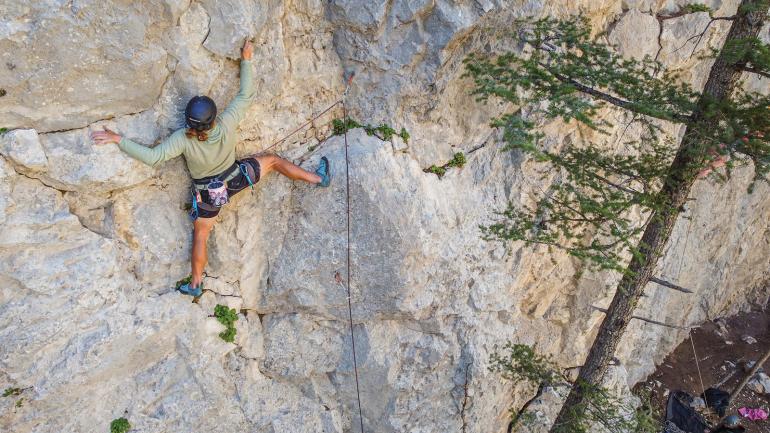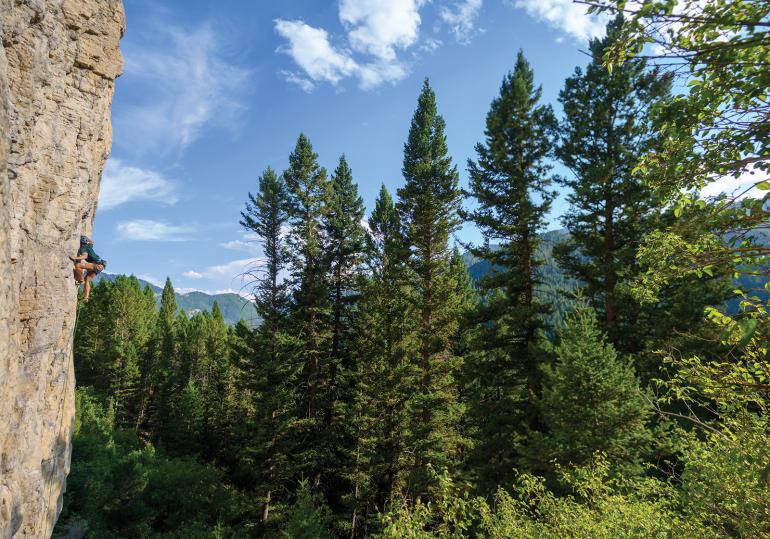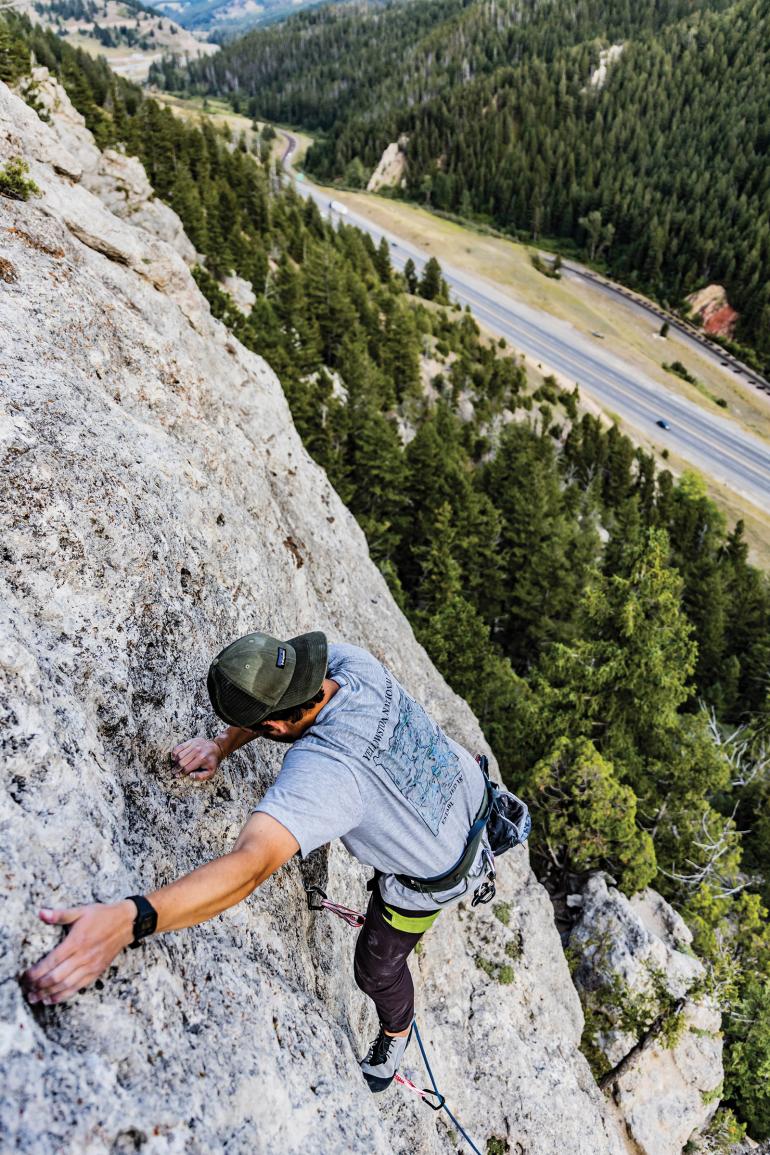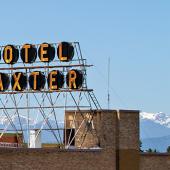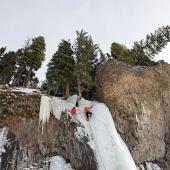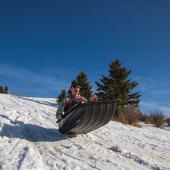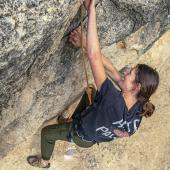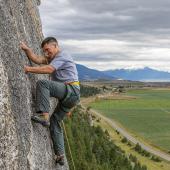The High Life
Learning the ropes.
Climbers are able to scale some of the most treacherous terrain on Earth with only a rope, harness, partner, and a few hunks of metal. The Bozeman area sports a wide variety of such terrain, and there are ample opportunities for climbers to test their mettle. From burly boulders to bulletproof limestone cliffs, Bozemanites can find somewhere to go damn near year-round, despite the long winters. So, if you’re looking for your next big challenge, or you’re a newbie just getting her bearings, here’s a guide to get you started.
From burly boulders to bulletproof limestone cliffs, Bozemanites can find somewhere to go damn near year-round, despite the long winters
Essential Gear
Start with the basics. A pair of climbing shoes and a chalk bag will allow you to start bouldering and building your strength, turning the delicate skin on your fingers into callouses. The next step is a harness and helmet. Once you’ve got those, you can bum your brains out, tagging along with more experienced climbers who’ve got all the other goodies. It gets more expensive from there, but with each new purchase you’ll become less reliant on others (freedom ain’t cheap). Sport climbers will want to invest in a set of quickdraws, a rope (preferably 9.5-10mm for durability), a belay device, and some anchor-building items like cordalette, locking carabiners, and slings. Boulderers who want to take the next step just need a crash pad or two before they can strike out on their own, although it’s always best to bring a spotter. A traditional climbing rack is the epitome of autonomy, but buying one can really break the bank—a full rack of cams and stoppers will run you a cool grand. It helps to buy one piece at a time and collect your treasure chest over several months or even years.
A traditional climbing rack is the epitome of autonomy, but buying one can really break the bank—a full rack of cams and stoppers will run you a cool grand.
Uphill Pursuits and Spire Climbing Center both stock just about everything a climber could need, and Spire even sells consignment shoes and cheap chalk bags out of their lost & found. Second Wind Sports also often stocks used climbing shoes. Facebook Marketplace can be a good place to find certain pieces of discounted gear, but buyers beware: never buy a used rope, harness, cordalette, or quickdraws from a stranger, although carabiners, cams, stoppers, and climbing shoes are usually okay.
Where to Go
BEGINNER
You just bought a chalk bag and climbing shoes at the pawn shop. Your friend who convinced you to do so has inspected your wares—the shoes smell vaguely of mold, but look sturdy enough—and you’re ready to go. But where to begin?
Bear Canyon is only 30 minutes from town (20 in the car, 10 on the approach), and it contains over 40 bolted routes between 5.6 and 5.10. Plus, if you hit it in April immediately after the rock dries out, you can link it with a Bear Canyon ski lap for an easy multisport day.
For more variety, consider Allenspur, a 45-minute drive from town at the mouth of Paradise Valley. Allenspur has 80-some sport routes ranging from 5.7 to 5.12, and the views of the valley and the Yellowstone River are hard to beat.
INTERMEDIATE
You have your own rope, a set of 14 shiny quickdraws, and you just bought a Black Diamond Camalot C4, although you’re not entirely sure how to use it. Last weekend, you finally climbed Ignition (and took two whippers in the process), and you’re hungry for more… where to next?
On the south side of town, Practice Rock is a good place for anyone who wants to practice their trad climbing on a variety of mellow routes up this small gneiss crag just a few minutes up Hyalite Canyon. Climbers can also walk up Practice Rock’s backside to set a toprope on most routes, and it offers a smattering of sport climbs as well. 26 climbs in total from 5.6 to 5.12, including the classic touchpiece: Cardiac Arête, 5.12c.
If you head east from Bozeman on I-90 for 10 miles, you’ll reach Bozeman Pass, a collection of limestone crags containing over 50 routes, all sport, with a variety of 5.11 and 5.12 climbs to choose from. Don’t miss Black Russian, 5.11d, which boasts a combination of pockets, spiny dishes, and crimps on bulletproof rock.
Scorched Earth is another option, and although it only has about 15 routes, most of them are clean, intermediate sport climbs around 5.11. A half-hour south of Bozeman on Highway 191, the crag gets its name from the ample sunshine that blasts its south-facing walls, making it an excellent place to climb in the winter.
ADVANCED
You’re well on your way to becoming a trad king—at least that’s what you tell yourself in the mirror every night while flexing your wiry muscles—and you’ll clip into almost anything if it’s bolted. You keep a note of all the routes you want to climb before the snow comes, and you’re ready to start ticking them off the list… but you’re new to Bozeman and aren’t sure where to get the goods.
If you only climb in one area in Bozeman, it’s gotta be Gallatin Canyon. With over 400 separate climbs and counting, and a good mix of trad, sport, boulders, and even alpine routes, you could spend years there and still find surprises. Try Bowling for Buicks, a 5.12a sport route, or the iconic Sparerib, 5.8, a two-pitch trad climb that concludes with a set of double cracks running all the way to the top.
Outside the obvious, there are plenty of gems, some more hidden than others. Wolverine Bowl on the backside of the Bridger Mountains is more secluded than other crags around Bozeman—partly due to the 30-minute drive and hour-long approach—but it features some of the best limestone sport climbing in the area. If you go even further out of town, you can explore the Pipestone area’s practically limitless boulders, most of them undeveloped, or Natural Bridge’s profusion of steep, limestone sport routes, where new climbs go up every year.
Etiquette
It’s always important to be conscious of your impact on other people and the landscape, and climbing is no exception. Basically, just be respectful and remember that the world doesn’t revolve around you. If that sounds too complicated, here are some helpful pointers.
Don’t crowd on the crag. If someone else is on a route, pick a different one and patiently wait your turn instead of breathing down their necks—even if you’ve been waiting all week for a crack at it. Also, don’t hog a route once you’re on one. If it’s a popular climb in the area, chances are you’re not the only one who wants to have a go.
Don’t be a distraction. That means leave your dog at home if she’s going to bother other climbers (or other climbers’ dogs) and keep volume at a reasonable level by not spraying beta or playing loud music, unless you’re 100% certain that everyone else will enjoy listening to a 17-minute Grateful Dead song as much as you do.
Clean up after yourself. Pack out all your gear, check for trash when you leave, and, for the love of all things holy, dispose of excrement—yours or your dog’s—properly by digging a hole or packing it out.


